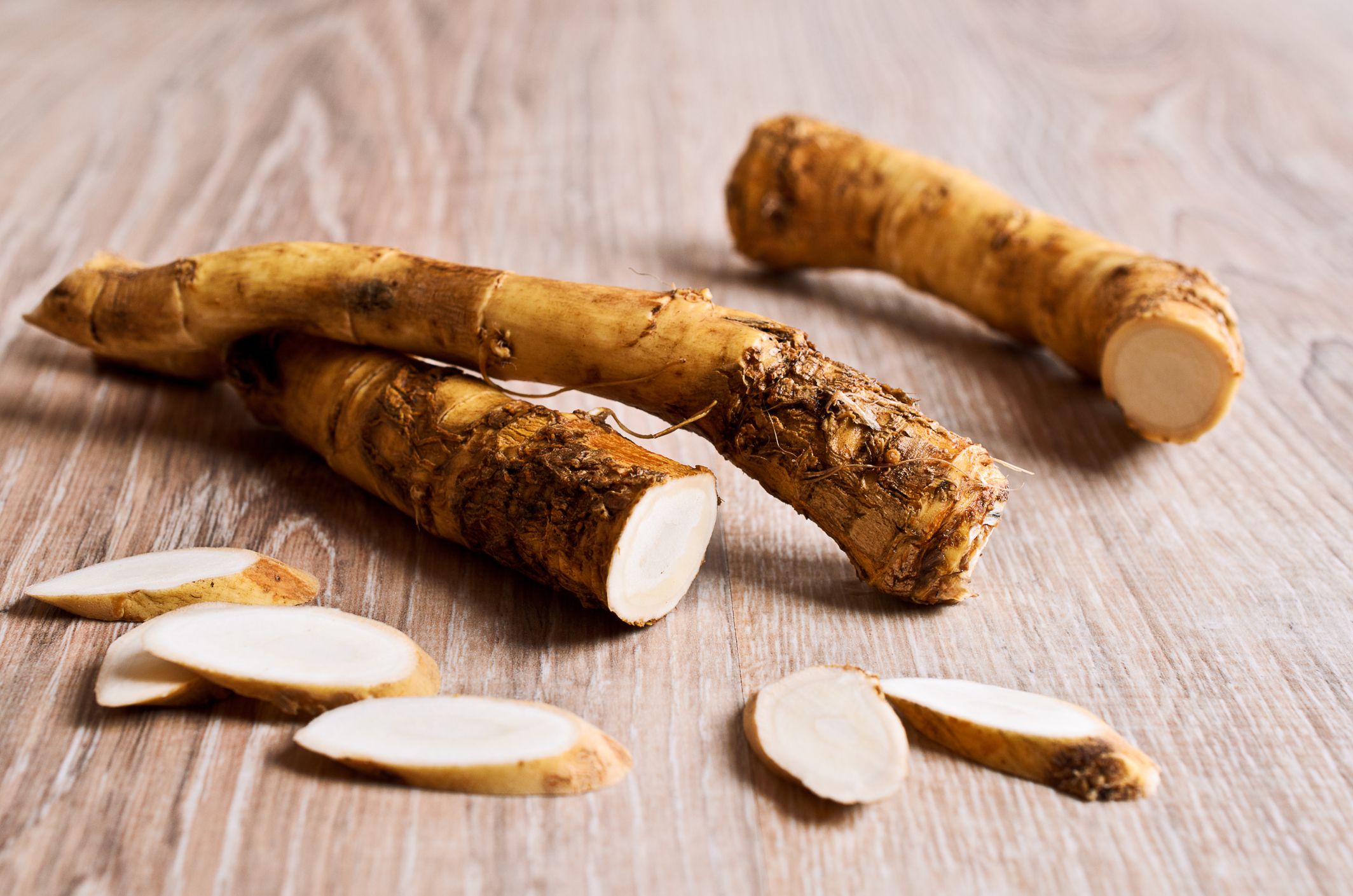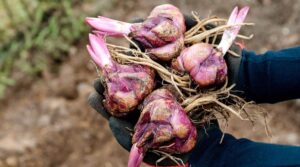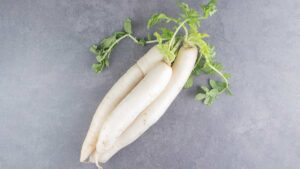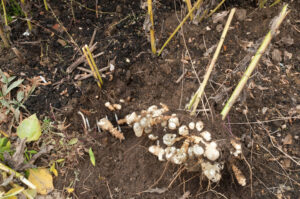How to Grow and Use Horseradish: A Complete Guide
Horseradish, with its powerful pungent flavor and numerous culinary applications, is one of the most rewarding herbs you can grow at home. Whether you have a spacious garden, a modest container on your patio, or just a sunny windowsill indoors, this versatile perennial can thrive under your care. In this comprehensive guide, you’ll discover everything you need to know about growing, harvesting, and using horseradish to elevate your home cooking.
Understanding Horseradish
Horseradish (Armoracia rusticana) is a hardy perennial plant in the Brassicaceae family, related to mustard, wasabi, and cabbage. What makes horseradish special is its thick, white taproot, which contains the compounds that create its distinctive spicy flavor when crushed or grated. Native to southeastern Europe and western Asia, horseradish has become a staple in American gardens and kitchens, particularly for those who appreciate its unique zesty kick.
Why Grow Your Own Horseradish?
Growing your own horseradish offers several advantages:
- Freshness: Store-bought prepared horseradish often contains preservatives and lacks the vibrant flavor of freshly harvested roots.
- Cost-effectiveness: A single horseradish plant can provide you with an abundant harvest for years.
- Organic growing: You can control what goes into your soil and avoid pesticides.
- Sustainability: Growing horseradish reduces packaging waste and transportation emissions.
According to the USDA National Agricultural Statistics Service, commercial horseradish production in the US is concentrated in Illinois, Wisconsin, and California, with the US market valued at approximately $20 million annually. However, home gardeners across all USDA hardiness zones 3-9 can successfully grow this versatile herb.
Growing Horseradish in Your Garden
Horseradish thrives in garden settings where it has room to spread its extensive root system. Here’s how you can establish a thriving horseradish patch in your garden:
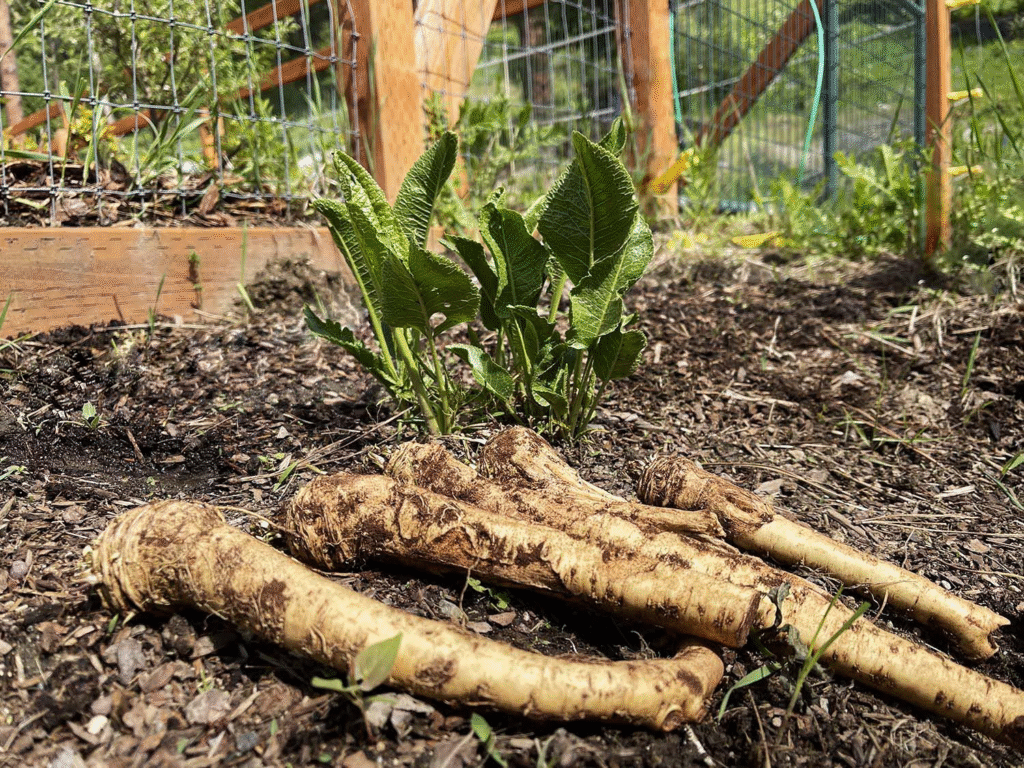
Selecting the Right Location
For successful horseradish cultivation, you’ll need to consider:
- Sunlight: Choose a location that receives full sun to partial shade. Horseradish generally prefers at least 4-6 hours of direct sunlight daily.
- Soil: Horseradish grows best in loose, well-draining soil with a pH between 5.5 and 6.8. Heavy clay soils should be amended with compost to improve drainage.
- Space: Provide ample room for your horseradish plants to spread. Each plant should have about 18-24 inches of space in all directions.
- Containment: Consider planting in a raised bed with barriers or in a designated area, as horseradish can become invasive if left unchecked.
Planting Horseradish
Unlike many culinary herbs, horseradish is rarely grown from seed. Instead, you’ll start with:
- Root cuttings (thongs): These 8-12 inch sections of horseradish root, about the thickness of a pencil, are the most common propagation method.
- Crown divisions: Established plants can be divided at the crown to create new plants.
To plant horseradish:
- Prepare your soil by loosening it to a depth of 10-12 inches and mixing in compost.
- Dig trenches about 4-6 inches deep.
- Place root cuttings at a 45-degree angle, with the top (thicker) end higher than the bottom.
- Cover with 2-3 inches of soil, leaving the top portion of the root exposed.
- Space multiple plantings 18-24 inches apart.
- Water thoroughly after planting.
The best time to plant horseradish is in early spring as soon as the soil can be worked, or in fall about 4 weeks before the first frost.
Care and Maintenance
Horseradish is relatively low-maintenance once established:
- Watering: Provide 1-2 inches of water weekly, especially during dry periods. Consistent moisture produces better root development.
- Fertilizing: Apply a balanced organic fertilizer in spring when growth begins and again mid-season. Avoid excessive nitrogen, which promotes lush foliage at the expense of root development.
- Weeding: Keep the area free from weeds that compete for nutrients.
- Pruning: Remove any flower stalks that appear, as flowering diverts energy from root growth.
- Pest management: Horseradish is relatively pest-resistant, but watch for flea beetles, aphids, and imported cabbageworms. The USDA recommends integrated pest management techniques for organic control: USDA Integrated Pest Management.
Growing Horseradish in Containers
If you have limited garden space or want to prevent horseradish from spreading, container growing is an excellent option:
Choosing the Right Container
For successful container cultivation:
- Select a pot at least 18-24 inches deep and 12-15 inches in diameter to accommodate the substantial root system.
- Ensure adequate drainage holes at the bottom.
- Use plastic, ceramic, or fabric containers—avoid metal, which can react with soil minerals.
Container Growing Process
Follow these steps for container-grown horseradish:
- Fill your container with high-quality potting mix amended with compost.
- Plant root cuttings at a 45-degree angle, leaving the top 1-2 inches exposed.
- Position the container in a location receiving at least 6 hours of sunlight daily.
- Water regularly, keeping the soil consistently moist but not waterlogged.
- Fertilize monthly with a balanced liquid fertilizer during the growing season.
- Move containers to a protected area during extreme weather conditions.
Containers will need more frequent watering than garden-grown horseradish, especially during hot weather. Check soil moisture regularly and water when the top inch feels dry.
Growing Horseradish Indoors
While horseradish prefers outdoor conditions, you can grow it indoors with proper care:
Indoor Growing Requirements
For successful indoor cultivation:
- Choose a deep container (at least 24 inches) with excellent drainage.
- Use a high-quality potting mix enriched with compost.
- Position in the brightest possible location, preferably a south-facing window.
- Supplement with grow lights if natural light is insufficient (14-16 hours daily).
- Maintain temperatures between 65-75°F during the day and slightly cooler at night.
- Ensure good air circulation to prevent fungal issues.
Indoor Growing Challenges
Be prepared for these indoor growing challenges:
- Slower growth due to reduced light exposure
- Smaller root development compared to outdoor plants
- Higher vulnerability to pests like aphids and spider mites
- Need for hand-pollination if flowering occurs
Regular misting or a small humidifier near your indoor horseradish can help maintain appropriate humidity levels, especially in dry indoor environments.
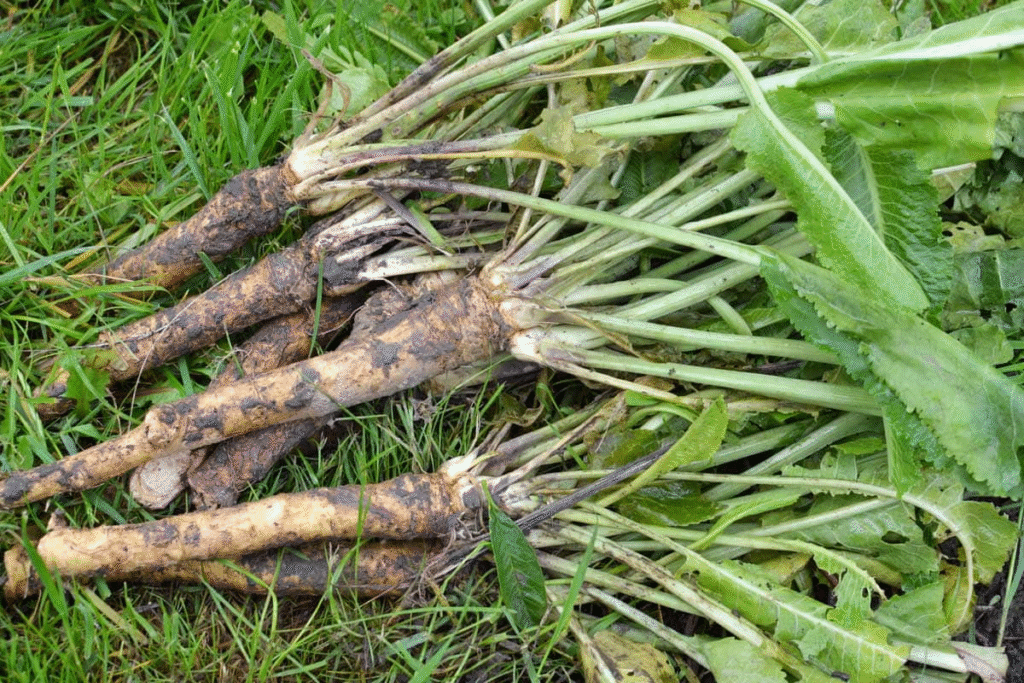
Starting Horseradish from Seed
While uncommon, growing horseradish from seed is possible, though challenging:
- Source fresh horseradish seeds, which may be difficult to find commercially.
- Stratify seeds by placing them in damp sand in the refrigerator for 4-6 weeks.
- Plant in seed-starting mix at a depth of 1/4 inch.
- Maintain consistent moisture and temperatures around 65-70°F.
- Expect germination in 14-21 days, though germination rates are typically low.
- Transplant seedlings when they have several true leaves.
Most gardeners find starting from root cuttings much more reliable and rewarding than the seed method.
Harvesting and Storage
Patience is key with horseradish—the longer you wait, the more flavorful your harvest:
When and How to Harvest
For optimal flavor and yield:
- Allow horseradish plants to establish for at least one full growing season before harvesting.
- Harvest in late fall after several frosts have occurred, which improves flavor.
- Alternatively, harvest in early spring before new growth begins.
- Dig carefully around the plant with a garden fork, loosening the soil 12-18 inches deep.
- Lift the main root and collect side roots for replanting.
- Wash harvested roots thoroughly to remove all soil.
Storage Methods
To preserve your harvest:
- Short-term: Clean roots can be stored in the refrigerator in perforated plastic bags for 1-2 weeks.
- Medium-term: Place unwashed roots in damp sand or sawdust in a cool (32-40°F), dark place for 4-6 months.
- Long-term: Prepare and freeze grated horseradish in airtight containers for up to 6 months.
Horseradish Varieties and Growth Characteristics
| Variety | Growth Characteristics | Flavor Profile | Best Uses | Days to Maturity |
|---|---|---|---|---|
| Common Horseradish | Vigorous growth, 2-3 ft tall | Strong, pungent | All-purpose | 200-240 days |
| Bohemian | More cold-hardy, deep roots | Very hot, sharp | Traditional sauces | 180-200 days |
| Big Top Western | Larger roots, more uniform | Medium-hot, aromatic | Commercial production | 220-260 days |
| Maliner Kren | Disease-resistant, high yield | Hot, consistent | Premium sauces | 190-210 days |
| Variegata | Decorative variegated leaves | Mild to medium | Ornamental/culinary | 200-240 days |
Preparing and Using Horseradish
The magic of horseradish happens when you process the roots:

Basic Preparation
To prepare fresh horseradish:
- Peel the outer brown skin from clean roots.
- Cut into 1-inch chunks.
- Process in a food processor or blender with a small amount of water, vinegar, and a pinch of salt.
- Add vinegar immediately for mild heat or wait 3 minutes before adding for maximum pungency.
- Store prepared horseradish in airtight containers in the refrigerator for up to 4-6 weeks.
Culinary Uses
Incorporate your homegrown horseradish into:
- Classic horseradish sauce with sour cream for roast beef
- Cocktail sauce for seafood
- Spicy vinaigrettes and marinades
- Bloody Mary mixtures
- Deviled eggs with a kick
- Mashed potatoes for extra zing
- Traditional Passover seder plates (maror)
The National Center for Home Food Preservation offers excellent guidelines for safely preserving horseradish: USDA Home Food Preservation.
Troubleshooting Common Issues
Even with this relatively easy-to-grow herb, you might encounter some challenges:
Common Problems and Solutions
- Weak growth: Usually indicates insufficient sunlight or poor soil fertility. Apply balanced organic fertilizer and ensure adequate sunlight.
- Forked or stunted roots: Often caused by rocky soil or improper planting angle. Ensure loose, stone-free soil and proper planting technique.
- Leaf spots or discoloration: May indicate fungal issues. Improve air circulation, avoid overhead watering, and consider organic fungicidal treatments if necessary.
- Spreading beyond desired area: Install root barriers or grow exclusively in containers to control spread.
By understanding horseradish’s growth habits and addressing issues promptly, you can maintain healthy, productive plants for many years.
Conclusion
Growing horseradish at home—whether in your garden, containers, or even indoors—provides you with access to one of culinary world’s most distinctive and powerful flavors. The satisfaction of harvesting, preparing, and using your own homegrown horseradish far exceeds the minimal effort required to grow this hardy, low-maintenance herb.
With proper planning, care, and harvesting techniques, your horseradish plants can become a perennial source of culinary delight and a conversation piece in your herb garden. As you become more experienced with this remarkable plant, you’ll discover countless ways to incorporate its distinctive flavor into your cooking, adding zesty excitement to meals throughout the year.
